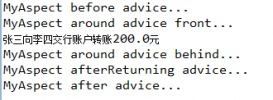res:bean属性复制避免null值覆盖版本
前言
- 最近在设计通用的 Service 和 Controller 层
- 设计过程中涉及到实体对象(JPA)的更新操作
- 原因1:JPA 的 saveAndFlush 方法会将把 null 也更新上去
- 原因2:spring 的 BeanUtils.copyBeanProperties 方法会把 src 所有属性值包括 null 覆盖到 dest,不符合要求
- 所以,利用反射,写一个属性复制方法代替 spring 的工具方法
- 另外,controller 层使用 @ModelAttribut 也可以解决这个问题,这就是另一个主题
代码 copyBeanPropertiesIgoreNull
|
1
2
3
4
5
6
7
8
9
10
11
12
13
14
15
16
17
18
19
20
21
22
23
24
25
26
27
28
29
30
31
32
33
34
35
36
37
38
|
/** * 对象属性值拷贝,null 值覆盖修复版 * @param beanSrc * @param beanDest */public static void copyBeanPropertiesIgoreNull(Object beanSrc, Object beanDest){ Class<?> clazzSrc = beanSrc.getClass(); Class<?> clazzDest = beanDest.getClass(); //获取所有属性,包括私有的和继承的 List<Field> allFields = getAllFields(beanSrc); try { for(Field field:allFields) { String fieldName = field.getName(); //属性名 if("serialVersionUID".equals(fieldName)) { continue; } PropertyDescriptor pd1 = getPropertyDescriptor(fieldName, clazzSrc); if(pd1!=null) { Method rMethod = pd1.getReadMethod(); if(rMethod!=null) { Object fieldValue = rMethod.invoke(beanSrc); //属性值,引用类型,所以一般实体的属性用 Integer instead of int if(fieldValue!=null) { //关键:属性值为 null 就不要覆盖了 PropertyDescriptor pd2 = getPropertyDescriptor(fieldName, clazzDest); if(pd2!=null) { Method wMethod = pd2.getWriteMethod(); if(wMethod!=null) { wMethod.invoke(beanDest, fieldValue); } } } } } } } catch (IllegalAccessException | InvocationTargetException e) { e.printStackTrace(); throw new RuntimeException(">> copyPropertiesIgoreNull exception", e); }} |
BeanUtils.copyProperties解决null值覆盖
这里使用的是Spring提供的BeanUtils的工具类(commons-lang3可参考)。在做数据变更的时候,使用BeanUtils.copyProperties(newdata,dbdata)进行数据变更的时候,由于前台展示的数据不完整。
导致前台传递的数据将后台的原始数据全部覆盖掉。那么如何解决这种null值的覆盖呢。BeanUtils.copyProperties()可以通过添加可变长参数忽略掉具体的某些不需要更新的字段。比如BeanUtils.copyProperties(newdata,dbdata,“id”,“password”)。
那么如果字段比较多,使用上面的方法简直要疯掉了。有没有更好的方法呢?
可以自己拓展一个方法,汇总值为null的数据
|
1
2
3
4
5
6
7
8
9
10
11
|
public static String[] getNullPropertyNames (Object source) { final BeanWrapper src = new BeanWrapperImpl(source); PropertyDescriptor[] pds = src.getPropertyDescriptors(); Set<String> emptyNames = new HashSet<String>(); for(PropertyDescriptor pd : pds) { Object srcValue = src.getPropertyValue(pd.getName()); if (srcValue == null) emptyNames.add(pd.getName()); } String[] result = new String[emptyNames.size()]; return emptyNames.toArray(result); } |
通过这个方法就可以将null数据找到,然后在可变长参数中使用方法即可。
|
1
|
BeanUtils.copyProperties(newdata,dbdata,getNullPropertyNames(newdata)); |
附demo:
|
1
2
3
4
5
6
7
8
9
10
11
12
13
14
15
16
17
18
19
20
21
22
23
24
25
26
27
28
29
30
31
32
33
34
35
36
37
38
39
40
41
42
43
44
45
46
47
48
49
50
51
52
53
54
55
56
57
58
59
60
61
62
63
64
65
66
67
68
69
70
71
72
73
74
|
public static void main(String[] args) { U u = new U("1","zhangsan",null,null,null,"11"); String[] nullPropertyNames = getNullPropertyNames(u); for (String nullPropertyName : nullPropertyNames) { System.out.println(nullPropertyName); }}public static String[] getNullPropertyNames (Object source) { final BeanWrapper src = new BeanWrapperImpl(source); PropertyDescriptor[] pds = src.getPropertyDescriptors(); Set<String> emptyNames = new HashSet<String>(); for(PropertyDescriptor pd : pds) { Object srcValue = src.getPropertyValue(pd.getName()); if (srcValue == null) emptyNames.add(pd.getName()); } String[] result = new String[emptyNames.size()]; return emptyNames.toArray(result);}class U { private String id; private String name; private String field1; private String field2; private String field3; private String field4; public U(String id, String name) { this.id = id; this.name = name; } public String getId() { return id; } public void setId(String id) { this.id = id; } public String getName() { return name; } public void setName(String name) { this.name = name; } public String getField1() { return field1; } public void setField1(String field1) { this.field1 = field1; } public String getField2() { return field2; } public void setField2(String field2) { this.field2 = field2; } public String getField3() { return field3; } public void setField3(String field3) { this.field3 = field3; } public String getField4() { return field4; } public void setField4(String field4) { this.field4 = field4; } public U(String id, String name, String field1, String field2, String field3, String field4) { this.id = id; this.name = name; this.field1 = field1; this.field2 = field2; this.field3 = field3; this.field4 = field4; } } |
打印的结果:
field1
field2
field3
好了问题解决!以上为个人经验,希望能给大家一个参考,也希望大家多多支持服务器之家。
原文链接:https://www.cnblogs.com/noodlerkun/p/11767032.html














